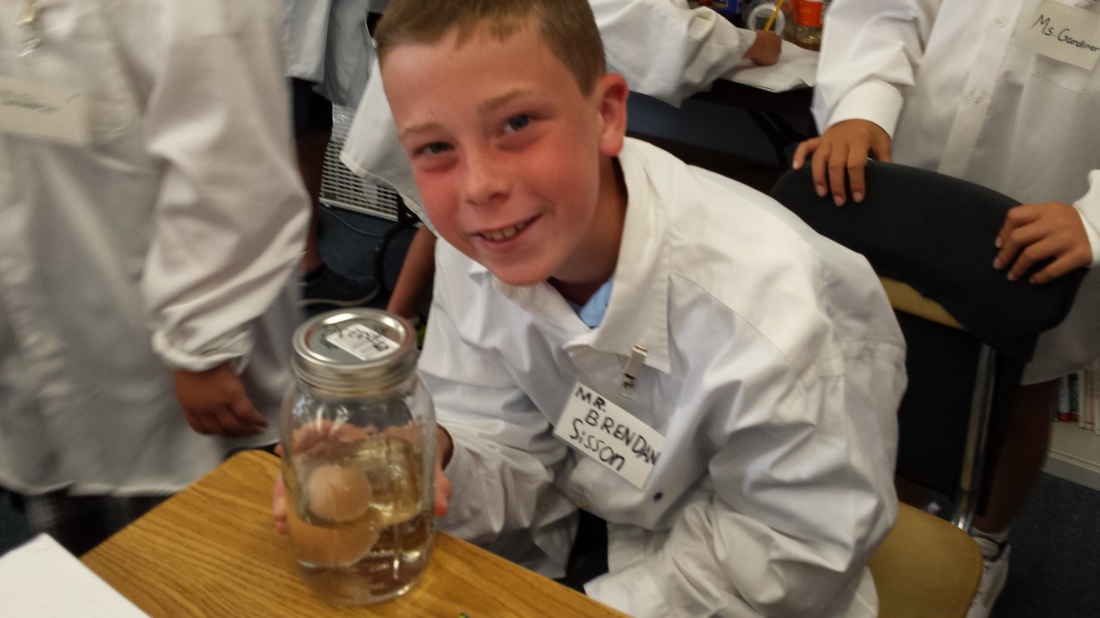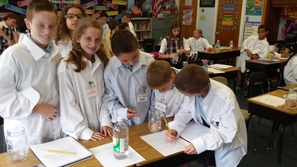|
Grade 5...How to make a Bare Egg?
A “bare egg” is an egg that has no shell. This is not something you normally run across and when you are shown a bare egg, it's hard to believe the egg stays intact. The shell of an egg is made up of primarily calcium carbonate. If you soak this egg shell in vinegar which is acetic acid, you start a chemical reaction that dissolves the calcium carbonate shell. The acetic acid reacts with the calcium carbonate in the egg shell and releases carbon dioxide gas that you see as bubbles on the shell. On paper it looks like this: CaCO3 (s) + 2 HC2H3O2 (aq) → Ca(C2H3O2)2 (aq) + H2O (l) + CO2 (g) The egg insides remain intact and are held together by the two fragile membranes just inside the shell. The process is really very simple. We carefully placed our eggs in a mason jars and fill the cup with vinegar so that our eggs were completely covered. We put just enough vinegar in the cup to mostly cover our eggs. The hard part – WAITING. In the beginning we could see some bubbles appearing on the outside of our eggs. These are bubbles of carbon dioxide gas from the reaction. After a day or two of soaking we carefully remove our eggs from the vinegar. At this point we literally rub the shells off our eggs with our fingers. We had some pretty cool bare Eggs! Comments are closed.
|
RSS FeedNewslettersSubscribe by emailArchives
|



